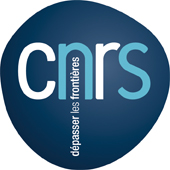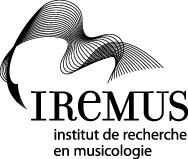WRITINGS
MIZUNO Mikako / 水野みか子
Archiving on text documentation and/or events information ; multiple sources of Japanese electroacoustic pieces
Edition:
Date: 2022
Region: EUROPE
Origin: GERMANY
Type of media: Conference
Language: English
Editor:
Comment:
Abstract:
Toshiro Mayuzumi, who had witnessed the concert of May 1952 in Paris ancient conservatory hall, completed the first Japanese piece of musique concrète, titled x,y,z for musique concrète , which was broadcast by Bunka Hoso in 1953. Since then the electronic music studio in the broadcast station--- Bunka Hoso or NHK --- has been the main place to produce Japanese electronic music.
One of the important archives can be found in NHK Broadcasting Institute which offers materials for historical and sociological research concerning production of electroacoustic music.
The other sources are journal articles, especially published in Ongaku-geijutsu because the first acceptance of Schaeffer’s musique concrète was through the texts by Mayuzumi and the critics, not through the musical pieces, although it was in 1970’s that Shaeffer’s texts were, even partially, translated into Japanese.
Compared to the pieces produced before 1970 when Osaka Expo was realized, researchers have much less materials concerning the pieces composed in 1970’s and1980’s. Tokyo University of Arts and Aichi University of the Arts are the Japanese pioneers of education of electronic music in 1970’s but their materials are almost intact.
With such background, Japanese Society of Electronic Music (JSEM) started archive project in 2019. JSEM was founded in 1992, so the archive covers 27 years of the society.
The project’s task was composed of two parts. One is to categorize the materials and information and to make a general matrix which covers 231 musical pieces by 83 composers; title of the piece, year of composition, instruments, software, hardware, technical rider, number of audio channels, performer’s name, production studio etc.
The second is digitizing the physical materials; audio recordings, movies of the performance, pamphlets, flyers, photos etc. JSEM archive contains the meta-data and the recordings of performance but doesn’t contain the original audio/audio-visual data of the pieces.
JSEM archive is now extending to cover the other related materials concerning Japanese electroacoustic pieces created in Tokyo, Osaka and Aichi, which will reach the restoration of a piece created by Ichiro Nodaïra.





